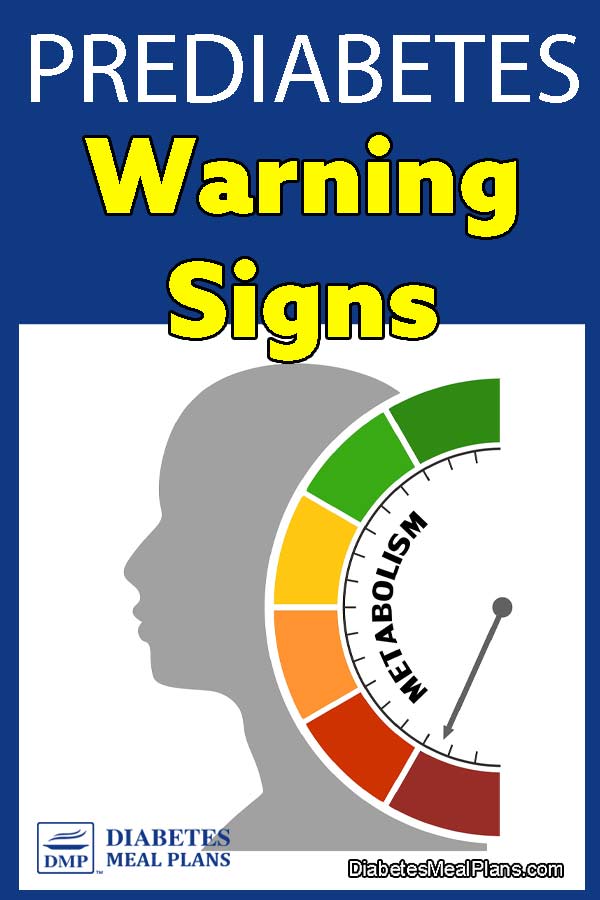It is important to understand the warning signs of prediabetes because the earlier you catch it, the more you can do to reverse your condition, and you don’t have to use medications.
Since we specialize in this area, we aim to simplify the complexities of prediabetes, helping you make the best choices for your health.
In brief, prediabetes is a health condition where blood sugar levels are higher than normal but not yet high enough to be classified as type 2 diabetes.
Prediabetes is a crucial stage in the spectrum of glucose intolerance, and early recognition is key to preventing its progression to a type 2 diabetes diagnosis.
So let’s look closer at the warning signs, risks and what to do about it.
The Importance of Early Detection
Prediabetes often flies under the radar, presenting few or no symptoms. That’s why it’s so important to have regular check ups with your doctor, especially if you have any of the warning signs, risk factors or concerns that you could be prediabetic.
Early detection allows for lifestyle changes that can significantly reduce the risk of advancing to type 2 diabetes. And if you can prevent a diagnosis, you’ll be much better off down the track!

Prediabetes Food List: Grab Your Free Copy
Foods to eat and avoid, plus, 2 day sample menu
Recognizing Prediabetes: Common Warning Signs
The following five things are the most common warning signs that you may have prediabetes:
- Elevated Blood Sugar Levels: Slightly increased blood sugar levels, typically determined by an A1c test, fasting plasma glucose test, or an oral glucose tolerance test, are definitive signs of prediabetes.
- Increased Thirst and Urination: These symptoms often go unnoticed but increased thirst and frequent urination can indicate your body’s effort to manage higher than normal blood sugar levels.
- Fatigue: Unexplained tiredness may occur when glucose isn’t efficiently used for energy.
- Blurred Vision: Occasional blurred vision can result from high blood sugar levels affecting your eyesight, so if you notice anything off with your vision, make sure to get a check up.
- Darkened Skin Areas: This condition, known as acanthosis nigricans, is a visible sign of insulin resistance. Insulin is a hormone that helps regulate blood sugar and resistance often occurs in prediabetes due to the higher than normal blood sugar levels.
As you can see, most of these things could go overlooked because you might feel tired but not put it down to a blood sugar issue. If you have any of the above warning signs, please get a check up with your doctor. They will order blood tests to see if you do in fact have prediabetes.

Delving Deeper: Understanding Risk Factors
Along with the warning signs that you may have prediabetes, there are several factors that put you more at risk of getting prediabetes or type 2 diabetes.
- Overweight and Obesity: Excess body weight, particularly around the abdomen, increases insulin resistance. Fat cells, especially those in abdominal fat, are not merely storage units but are active metabolically, affecting the way your body processes insulin.
- Sedentary Lifestyle: Physical inactivity affects the body’s ability to regulate blood sugar and use insulin efficiently. Regular exercise helps muscle cells use blood sugar for energy, improving insulin sensitivity.
- Age: The risk of prediabetes increases with age, possibly due to decreased muscle mass, increased weight, and less physical activity.
- Family History of Type 2 Diabetes: Genetics play a role in prediabetes. Having a close family member with type 2 diabetes increases your risk, indicating a hereditary predisposition to issues with blood sugar regulation.
- Ethnicity: Certain ethnic groups, including African Americans, Hispanic Americans, Native Americans, and Asian Americans, are at a higher risk, pointing towards genetic and environmental factors.
- PCOS and Gestational Diabetes History: Women with PCOS or those who have had gestational diabetes are at a higher risk due to insulin resistance associated with these conditions.
Connecting Prediabetes with Metabolic Health
Prediabetes doesn’t exist in isolation. It’s often a part of a cluster of conditions known as metabolic syndrome. This syndrome includes a range of issues like high blood pressure, high cholesterol levels, and abdominal obesity, which collectively increase the risk of heart disease, stroke, and type 2 diabetes.
- Cholesterol: High levels of LDL (bad cholesterol) and triglycerides, along with low levels of HDL (good cholesterol), are common in prediabetes. These imbalances contribute to atherosclerosis, where arteries become clogged with fatty deposits, raising the risk of heart disease.
- Blood Pressure: Hypertension often coexists with insulin resistance. High blood pressure puts additional strain on your heart and blood vessels, exacerbating the risk of cardiovascular complications.
- Metabolic Syndrome: This is characterized by a group of conditions – increased blood pressure, high blood sugar, excess body fat around the waist, and abnormal cholesterol levels. Having metabolic syndrome increases your risk of heart disease, stroke, and type 2 diabetes.
The Importance of Recognizing These Factors
Understanding these risk factors is crucial for several reasons:
- Early Intervention: Early identification allows for timely lifestyle interventions, which can significantly delay or prevent the onset of type 2 diabetes.
- Holistic Health Approach: Addressing these risk factors often requires a holistic approach, focusing on diet, exercise, and lifestyle changes that benefit overall health, not just blood sugar levels. However, the most important component of prediabetes treatment is diet and nutrition.
- Prevention of Complications: By managing these risk factors, you can also reduce the risk of complications related to heart disease and stroke.
- Informed Lifestyle Choices: Knowledge of these factors empowers you to make informed choices about your health, with the most important factor being your diet.
The Power of Diet and Lifestyle Changes
Lifestyle changes can profoundly impact prediabetes management. A low-carbohydrate diet, limiting carbohydrate intake to 10-26% of total energy and aiming for no more than 100g of carbohydrates daily, can help lower blood sugar levels back to normal, and that’s what you want to do.
Get started by downloading our recommended food list.

Prediabetes Food List: Grab Your Free Copy
Foods to eat and avoid, plus, 2 day sample menu
Embracing Healthy Eating Habits
A diet rich in vegetables, lean proteins, and healthy fats, avoiding processed foods and sugary drinks, is beneficial.
>Listen to this podcast on How To Eat To Treat Diabetes and Prediabetes
Conclusion: A Proactive Approach to Health
Recognizing the warning signs and risk factors of prediabetes and adopting proactive steps, including diet, exercise, and regular monitoring, can significantly reduce the risk of developing type 2 diabetes.
By taking manageable steps towards a healthier lifestyle, you can achieve significant improvements in your overall health and well-being.
Understanding and addressing these factors through a holistic approach offers a comprehensive strategy for not just managing prediabetes but enhancing overall metabolic health. Remember, each step towards a healthier lifestyle is a step away from the risk of diabetes and towards a healthier, happier future.
And, don’t do it alone! Get expert support to reverse your prediabetes naturally.


Leave a Reply